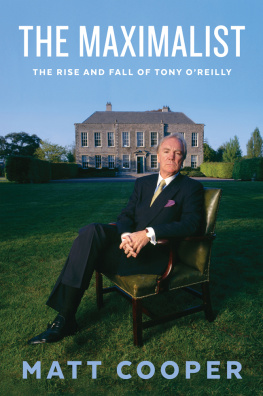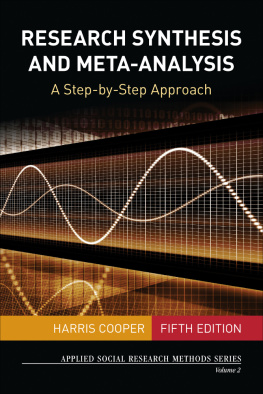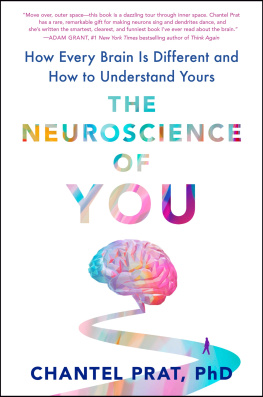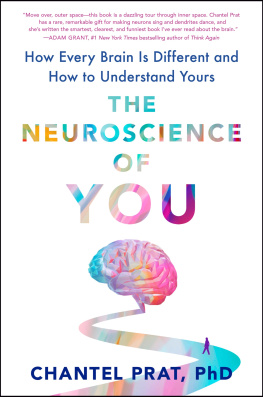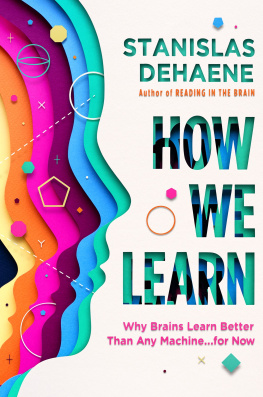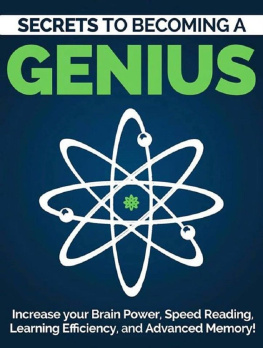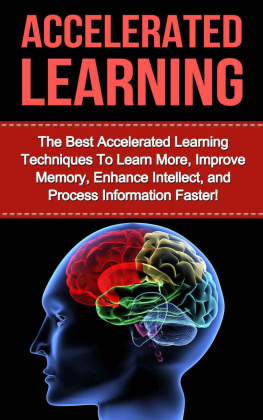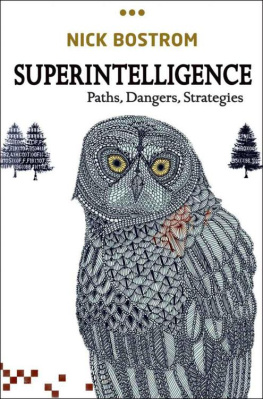Accelerated Learning & Unlimited Memory Techniques and Strategies for Students and Adults
By Jimmy Cooper
Contents
Introduction
...n othing worth knowing can be taught. Oscar Wilde
We would accomplish many things if we do not think of them as impossible. Vince Lombardi
All of the research and studies that has been conducted on the human brain for the past couple of decades has opened the door to interesting knowledge about this gray matter lodged in our heads. Neuroplasticity, for instance, is an exciting concept that took the world by storm.
Neuroplasticity, in laymans terms, is the brains ability to form and create new neurological connections that allow the brain to adapt, change, and grow. Neuroplasticity offers limitless possibilities for humans to course its destiny. It suggests primarily that by controlling our brain, we control our own fate. Several people have testified as to how they restored their lost functions[1] by tapping into the potential of the brain to rewire itself.
One living testament to this was Barbara Arrowsmith, a young woman in the 1970s who suffered from learning disabilities. In her autobiography The Woman Who Changed Her Brain , she recounts her own dramatic transformation from being a slow and struggling learner into a normal one by doing cognitive exercises, some of which we will cover later.
She was born with a formidable memory but without the ability to retain anything for the long-term. She has a hard time following directions and gets lost even in familiar places. But with years of hardship, struggle and determination, she was able to finish a graduates degree.
The story of a brain-wounded Russian soldier Lev Zasetsky and the works of a psychologist Mark Rosenzweig on neuroplasticity inspired her to embark on a mission of doing the experiment on her own brain. She spent time in libraries trying to read challenging books particularly on the subject of philosophy - which are exceptionally hard to comprehend, much more for beginners as she was. The result was an incredible success.
One of the theories in neuroscience is that continuously engaging the brain with mentally challenging tasks causes it to make new neural connections and thus change its shape and composition. In short, she was able to fix her own inborn brain glitch.
Neuroplasticity proposes that you can actually shape the brain by doing activities which help you to improve cognitive abilities. Its like exercising the body where the brain is like the muscles, which when worked and trained, gets better. It is limitless. But unlike the brain, muscles may be stretched only up to a certain limit. The capacity of the brain is intangible.
The brain is a physical thing. But the growing knowledge about the brain which we have now is just the beginning as neuroscience is still very young. The capacity of the brain is still undetermined and the possibilities about it are endless.
Come to think of it: given the certainty that there are physical changes that happen to our brain, isnt it exciting that by sheer will, we have the power to mold it according to what we engage it in?
In this book, we look into the latest scientific studies on the brain and lay them as the foundation for the tips and strategies suggested here for stronger memory and better learning. Please enjoy.
Chapter I.
Improving Your Memory
Y our eyeglasses were missing and you frantically searched for them everywhere, only to find out that theyre just right there perched comfortably on your head. Your phone, which was on silent mode, has disappeared, and theres no way to let it go from your perplexed mind other than to think that it must have been stolen.
You walked into a room and you dont have any idea why youre there. You missed a deadline, you forgot your friends birthday, and you left your wallet on the bus. You studied hard for an exam the night before, and the first question was so easy but you suddenly find it hard to answer because you cant seem to remember what you studied and you almost want to squeeze your brain out.
So what is this all about? Is it memory loss already? Or is it simply a case of inattentiveness?
Memory lapse due to absentmindedness afflicts all of us, teenager or adult, young or old, female or male, busy or not. The curse of being absentminded is that you suffer from a difficulty of trying to recollect something or a piece of information that was poorly registered in your memory. It was not quite stored in your memory because, well, you hadnt been paying full attention in the first place.
Unlike memory loss, absentmindedness is a condition which need not be clinically diagnosed. It is simply an indication of a lack of attention or interest in something, or of the boredom that we ordinarily go through sometimes in our daily lives, or the result of being distracted and preoccupied with something else.
Actual memory loss, on the other hand, may be a symptom or consequence of a variety of medical conditions. It may be due to Alzheimers, dementia, seizure or a brain injury. It may also occur along with absentmindedness.
Despite these differences, what is interesting about memory loss as a medical symptom and simple absentmindedness is the fact that these two are both conditions of the neuroplastic brain.
Memory loss, particularly, is a case in point because the possibility of its reversibility was unraveled by a team of researchers in Northwestern School of Medicine[2]. The nun study, as it was called, was an unprecedented finding about the brain and its diseases, thanks to the elderly nuns who participated during their lifetime and who consented that their postmortem brains be scrutinized for the sake of neurological research.
The nuns in that convent were tracked regularly for their memory performances and mental acuity. There were nuns who were noted for their superior mental performances and optimistic disposition. They wrote autobiographies and were active both physically and mentally. When they died, it was found out that their brains exhibited signs of full blown Alzheimers, and yet, the symptoms of Alzheimers did not exist during their lifetime.
Although the nuns brains showed physical signs of memory disorders such as plaques and lesions, their cognitive skills seemed to have been unaffected.
This led another team of scientists to use PET brain-imaging technology on the brains of live patients, and the results confirmed the previous finding that it is possible for the human brain to develop complete dementia or Alzheimers without suffering the outward symptoms of cognitive impairment such as confusion, poor judgments, memory loss, etc.
If you mull it over, even a brain-related disorder which is biological and natural such as aging can be reversed by utter force of human will. This means that our proneness to aging-related cognitive disorders in the future, which will affect every one of us by the way, may be deviated and is subject to possible offset. This means that we can actually choose to develop habits and engage in activities that will protect our mind before this decline takes its toll on us.
Improving ones memory is definitely not only for the elderly. In fact, it appears that in todays age of distraction and constant forgetfulness even for the young people, it is the new generation of millennials who will need it the most.
In this section, the keys to improving memory are summarized in the list below. Each key will be discussed in the next sections, along with the strategies and systems that may help in memory retention and recall.
- Mindfulness
- Sleep
- Memory foods
- Aerobic exercise
- Mental challenges
- Mnemonic Systems and Strategies
- Power of Observation
A. Mindfulness
Next page


